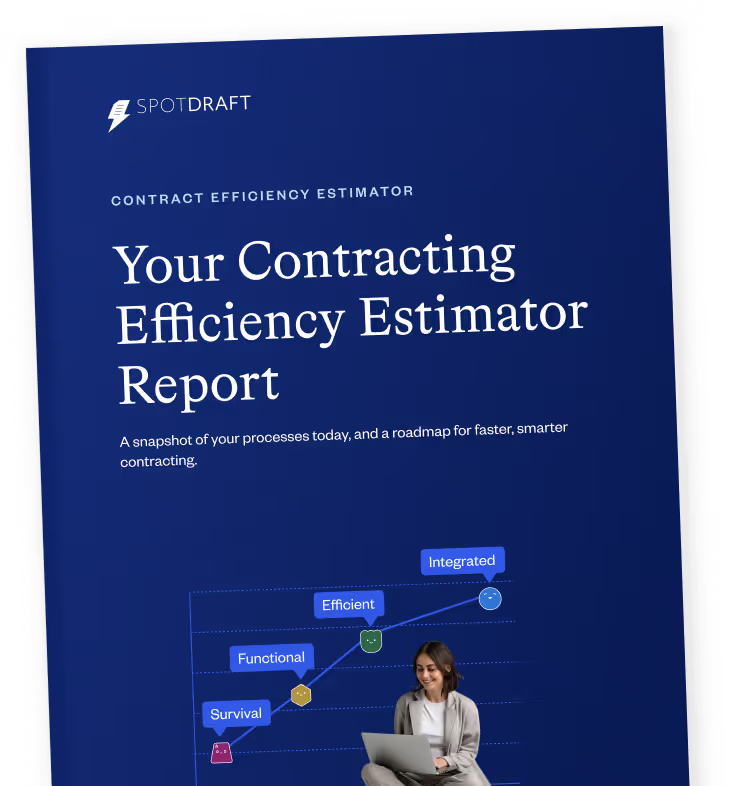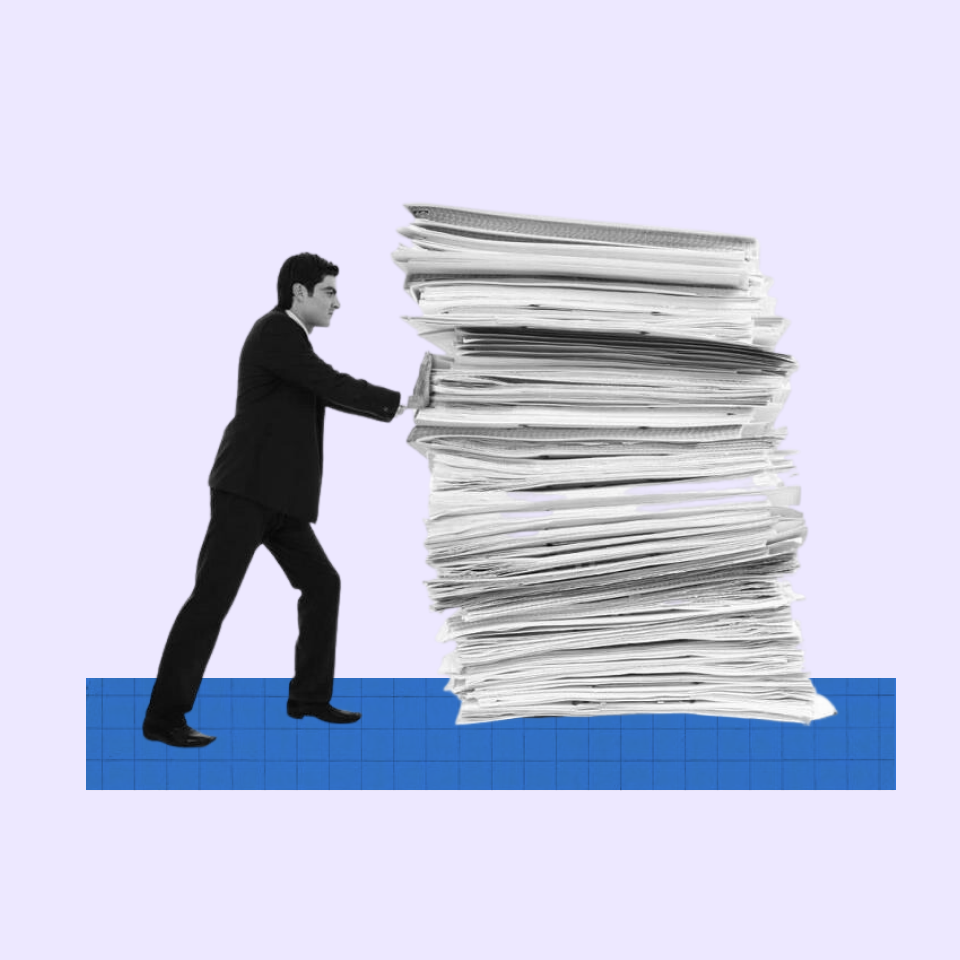We’ve had a lot of experience working with procurement and the challenges therein.
For example, the issues that can arise from the manual nature of procurement contracts in many organizations. We once spent six-plus weeks consulting for the procurement team of a Fortune 500 company. It was all hands on deck, with even the Director of Procurement involved, manually going through contracts to pull their expiry dates. Was this the most effective use of everyone’s time? No, it was just necessary because there was no other way to get that information.
If you’ve ever had to do the “ask of shame” for the latest copy of a contract from the CP, you’ll know that nagging feeling that there has to be a better way to manage your procurement contracts efficiently.
Fortunately, there is a solution. You can have easy access to contract data, you just need the right system in place…
Let’s take a look.
Challenges in procurement
Your contract lifecycle management begins the moment a contract is awarded to a new supplier or vendor. In theory, it should be simple enough; just abide by the terms of the contract. In practice, large volumes of contracts can become a management nightmare for busy procurement or vendor management teams. You require clear visibility over those contract terms to ensure you’re meeting them.
If you don’t have a streamlined system in place, visibility is difficult. You have a high cost of operations with having to do extra tasks to keep track of everything, and there’s an operation's risk with potentially missed obligations.
Some of the key challenges include:
Decentralized storage
Decentralized storage is a contract management nightmare, particularly if your organization has a large volume of vendor contracts. The problem is that those contracts may be in someone’s inbox, in local hard drive folders, or even stuffed into the bottom drawer of someone’s desk. Contracts can fall out of sight and out of mind.
When one of your primary high-level goals is to reduce company costs, you need instant, efficient access to a centralized database of contracts. This allows you to easily see how much company spend is aligned with contracted rates, as well as opportunities to reduce costs during renewals
Opaque legal review process
Procurement is often the “middleman” coordinating the review of an agreement with the legal department. Once the contract is sitting with legal, it can often fall out of sight for procurement. They don’t know who has it, what has been done, or what stage it is at. Anyone wanting to stay in the loop spends a LOT of time on follow-up.
This is an obvious time inefficiency. What if you could avoid a whole lot of back-and-forth communication, yet still know the exact status of the contract with legal?
Missed renewals
Missing a contract renewal can be extremely costly, especially if certain contracts have an auto-renewal clause baked into the contract. Perhaps as a symptom of decentralization and a lack of visibility, not getting to contract renewals on time is a challenge for procurement. Suddenly you find you’re locked into a new term with clauses that you don’t favour.
Cumbersome spend analysis
Your ability to analyze spending is only as good as the data you have available. Identifying how much money the company is spending with each vendor is often a herculean task in terms of time and effort, especially if you don’t have full visibility over all of the information you need. Is this the most up-to-date version of the contract? You often don’t know that, especially if contracts are decentralized.
Approval hierarchy
Procurement teams are usually well-structured, right from sourcing analysts up to the CPO. Depending on contract values, approvals are mandatory within the procurement team and generally within a hierarchy.
This can be challenging to track, especially when you don’t have a robust system for doing so. Whose desk is the contract currently sitting on? Who requires what information?
Contract utilization
Contract utilization is usually a primary KPI for procurement teams. They often have hundreds of contracts, sometimes by individual materials. This can result in teams having to dig through thousands of lines to identify key terms to measure contract utilization, an inefficient and time-consuming endeavor.
Benefits of investing in contract management software in procurement

Contract management software can take some of the major pain points out of contracts for procurement or vendor management teams. Streamlining and visibility over contracts are two examples. With better clarity, teams can ensure they meet their goals of reducing costs, improving utilization, and tracking vendor performance.
Here are some of the key benefits:
Centralize all contracts
No more chasing up emails, digging through drawers, or trying to find on which hard drive a contract has been stored. Contract management software holds all contracts in one, centralized repository, making it easy to find any contract information you need.
You can search by key values such as expiration or auto-renewal, or even by certain terms. Never spend hours on end searching for contract information again. SpotDraft also integrates with key cloud storage providers, such as Box and Google Drive to ensure all contracts are in one place.
Leverage industry-leading technology
AI and OCR technology are game-changers in terms of bringing new efficiencies to contract management software. One of the key benefits they bring is intelligent automation. For example, they can automatically extract key data or identify key terms within a contract.
These features can save hours that would otherwise be spent combining contracts manually to identify key information.
Visibility over the contract management process
Who has the contract right now and what is its status? Contract management software provides this tracking capability so you don’t have to keep bugging the legal team with multiple follow-ups. If a contract is sent to legal, you can seamlessly track progress at any stage of time.
Easy access to reports
Reporting is an important task, but without the right tools, it can take hours to pull together the data that you need. Contract management software allows you to easily download reports based on the expiration date and contract type to identify cost reduction opportunities.
You might also choose to create customized reports by filtering contracts according to key criteria. This is where procurement teams can get more granular details on where possible cost reductions may lie.
Keep track of contract relationships
Having a clear, bird’s-eye view of related contracts can be challenging for procurement teams. When you work globally, contracts are often signed per business unit, making it difficult to track all related contracts if the relationship isn’t defined.
With SpotDraft, all global contracts with different entities can be easily tied together.
-> Read Now: The essential components of a successful vendor management program
How SpotDraft helps procurement through key stages of contract lifecycle management

Spotdraft is here to help procurement and vendor management teams throughout the contract lifecycle:
Contract creation stage
With SpotDraft, procurement teams don’t always have to bother the legal team to create a new contract, because they can use templates from previous procurement contracts. The legal team can rest assured that there are no errors when creating the contract because the software has validations and dependency logic baked into the creation flow.
Additionally, approval processes are automated. For example, this might kick in if payment terms are less than the corporate standard, or any other “rules” you want to be set for your contracts.
Contract editing stage
Version control can be tricky if contract editing isn’t centralized on a cloud-based platform. Fortunately, SpotDraft makes it easy for teams to collaborate, make edits, and always know they’re looking at the most up-to-date version.
Procurement can also use the commenting feature to scope comments accordingly. For example, you probably don’t want the CP to see all comments, so it’s possible to hide some from them. This reduces the document cleanup that’s required.
Contract negotiation stage
SpotDraft includes a thorough clause library, meaning that procurement has access to pre-approved clauses to insert into the contract. They also have complete visibility over where the contract is at each stage, including task-tracking.
Contract approval stage
SpotDraft helps procurement teams to ensure contracts automatically go through the approval process by sending the contract up the hierarchy based on metadata. This provides a convenient audit trail and helps to prevent potentially disastrous approval errors. Users will always know who signed and when.
CPOs often feel comfortable signing contracts after their legal counsel or assistant reads through the final copy and provides their approval. With the ability to add approvers within the signing process, procurement officers can now feel comfortable affixing their signatures, knowing they have the right set of approvals.
Contract execution stage
The contract execution stage is streamlined for users. SpotDraft provides a safe, seamless, and secure native signing capability so that users can easily and quickly add their signatures through the software itself.
Additionally, SpotDraft has integrations with all leading e-signing tools like DocuSign, AdobeSign, and Hellosign. These are single systems where contracts can be negotiated and executed. Procurement teams don’t need to manage multiple tools and the additional challenges that can bring. After the contract is signed, it will automatically be updated on other platforms such as Google Drive, Box, or Salesforce, according to the user’s request.
Contract storage stage
As previously discussed, SpotDraft provides convenient, centralized storage space for contracts. This provides a high level of visibility for procurement teams.
For global procurement teams, this is extra-important. Many Fortune 500 companies do not have a centralized procurement team and each business unit can have its budget and contracting rights. With a centralized repository, the corporate team’s governance becomes much easier to oversee.
Contract renewal stage
Bringing visibility at the contract renewal stage is arguably one of the most important things SpotDraft can do for procurement teams. Reminders and alerts mean renewals don’t get missed and procurement teams get every opportunity to save costs.
Conclusion
SpotDraft is an excellent choice for every vendor management or procurement team that needs better visibility over contract management. Our leading-edge features streamline the contract process and ensure that everyone who needs it remains in the loop.
There are true savings in both time and costs for procurement teams that use SpotDraft, and we’d love to help your team. Request your free demo of SpotDraft here.

.avif)







